What is first-party data?
Published on April 17, 2025/Last edited on April 17, 2025/19 min read
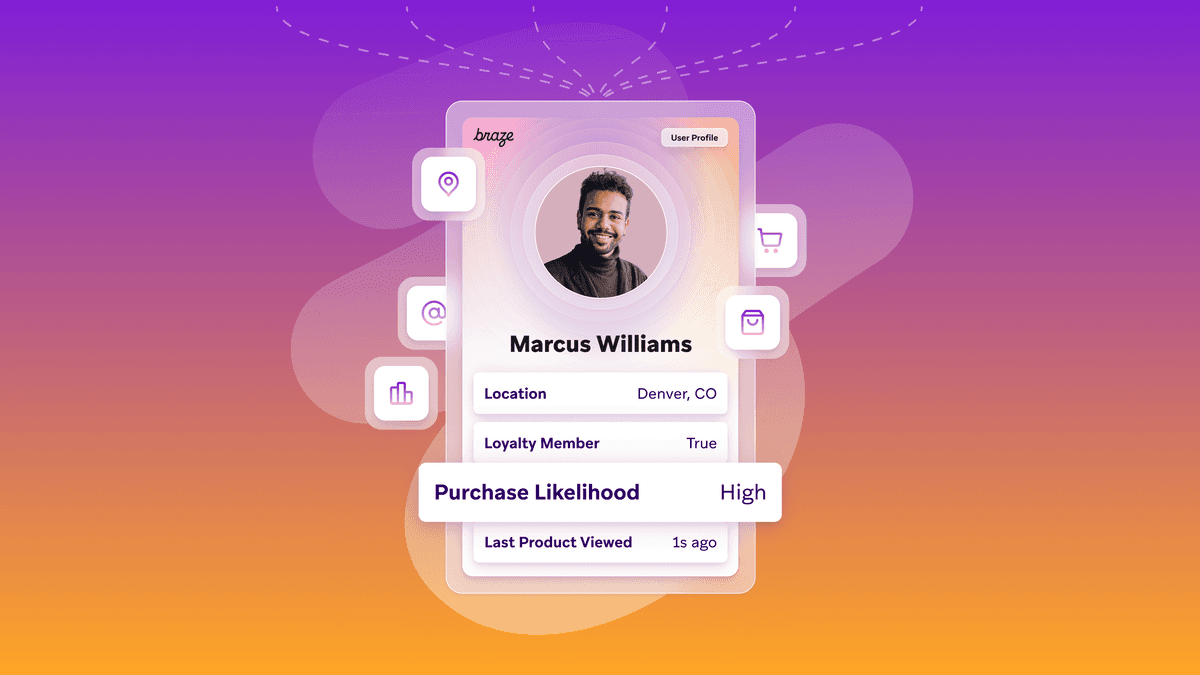
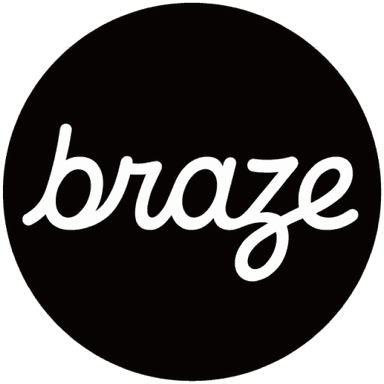
Team Braze
First-party data is important for brands that are aiming to connect authentically with their audiences. This type of data—sourced directly from customers across owned platforms and channels such as websites, mobile apps, and social—helps fuel personalized experiences that can engage customers more deeply.
New data privacy laws and regulations have led brands to increasingly embrace first-party data and move away from third-party data, which used to be dominant. Navigating these legal frameworks is a must for businesses dealing with data.
In this article, we'll explore the significance and benefits of first-party data. We'll learn how to differentiate it from second-party, third-party, and zero-party data, and share real-life examples of successful first-party data campaigns. We'll also discuss privacy considerations and how a customer engagement platform can support your first-party data strategy.
In this guide, we'll explore:
- What is first-party data?
- Why is first-party data important?
- What’s the difference between first-party data, second-party data, third-party data, and zero-party data?
- Benefits of first-party data
- How to collect first-party data
- How a well-executed first-party data strategy can enhance your marketing
- Real-life first-party data examples
- Privacy and data collection with first-party data
- Final thoughts
- First-party data FAQs
What is first-party data?
First-party data is information that brands collect directly from their customers and audiences through their own platforms and channels, such as websites, apps, or email. For example, a brand sends a customer an email, which a customer opens and clicks on a link within the email. That behavior can be tracked by the brand and is considered first-party data.
Other examples of first-party data can include:
- Demographic details: Age, gender, location, if the customer shares it directly with the brand
- Purchase history: Previous transactions and buying behavior
- Website and app interactions: Pages visited, time spent, and features used
- Communication preferences: Email subscriptions and engagement levels
Why is first-party data important?
According to Google, first-party data “helps brands to build direct relationships with their customers, create value, and boost their advertising performance.” Google also found that those using first-party data for key marketing campaigns achieved up to 2.9X revenue uplift and a 1.5X increase in cost savings.
To truly understand why first-party data is so important however, we need to understand the other types of data that businesses collect.
What’s the difference between first-party data, second-party data, third-party data, and zero-party data?
While first-party data is collected by an organization directly from its audience, with each user’s consent, zero-party, second-party, and third-party data are collected in different ways.
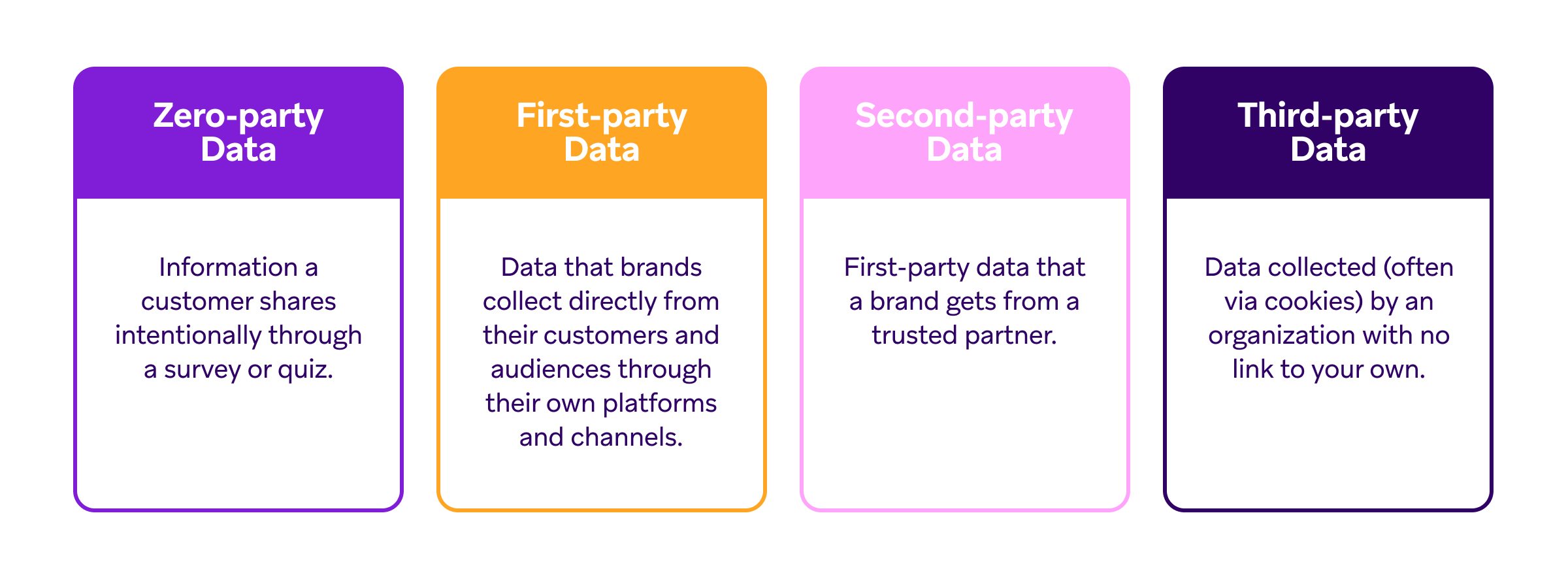
What is zero-party data?
Zero-party data is information that customers intentionally share with a brand, such as preferences and feedback collected through surveys and quizzes. Zero-party data is often considered a type of first-party data.
It can validate and support other data or it can highlight differences. Zero-party data can also help flesh out anonymous and guest users, who account for 86% of retail users and 57% of users across all brands—a huge untapped audience.
What is second-party data?
Second-party data is another organization’s first-party data. It is shared between trusted partners as a way to leverage customer insights and see how they are interacting with other brands. Second-party data includes email subscribers, customer feedback, surveys, and social media profiles. These can be used by one brand to target another brand’s audience that is similar to their own.
In general, it only makes sense to leverage second-party data if the users whose information is being shared have been notified about the arrangement and given the option to opt out; otherwise, you run the risk of messaging users who actively do not want to hear from you or don’t know who you are.
What is third-party data?
Third-party data is any information collected by another organization that has no link to your own. It is often collected by cookies, which serve as a mechanism to remember information about the user's visit. Cookies enable functionalities like maintaining login sessions, preserving preferences, and tracking interactions across pages.
Historically, marketers could use third-party cookies to monitor browsing habits, build detailed user profiles, and deliver targeted advertisements based on individual interests and behaviors. However, over time, this tracking raised significant privacy concerns among users and regulators. In response to these and other larger privacy concerns, laws such as the European Union's General Data Protection Regulation (GDPR) and the ePrivacy Directive were enacted. Many states in the US have passed data protection laws as well.
Some of these laws require websites to obtain explicit user consent before deploying non-essential cookies and aim to enhance transparency and give users greater control over their personal data. This limits the effectiveness of third-party cookies for unsolicited tracking and advertising purposes.
As of March 2025, many browsers already block or severely restrict the use of third-party cookies. Firefox has Enhanced Tracking Protection (ETP) which blocks third-party cookies from known trackers by default and Apple Safari introduced Intelligent Tracking Prevention (ITP) in June 2017 which completely blocks third-party cookies.
Google initially stated they would phase out third-party cookies, but made the decision in July 2024 to change direction and instead make it easier for Chrome users to make informed choices about their cookie priorities.
Beyond advertising cookies, data aggregators pay other companies for their first-party data, collect it all into one set and then sell it as third-party data. It’s usually bought and sold on a mass scale with thousands and thousands of data points, which are used to make inferences about a user’s lifestyle, create profiles, and then predictions that are sold to advertisers and used for targeting personalized ads.
This type of data is widely available, which means your competitors can buy it, too. More importantly, this data is often out-of-date, incomplete, or inaccurate, which, even if compliant, would not lead to a great consumer experience.
Benefits of first-party data
First-party data offers several key benefits that can significantly improve your marketing efforts:
1. Increased relevance of marketing messages
By using data collected from actual customer behaviors and preferences, your marketing messages can be more precisely tailored to resonate with your audience. For instance, a streaming service can recommend shows based on a user's viewing history—and avoid telling the user to watch something they’ve already seen.
2. More efficient budget allocation
Access to accurate first-party data helps you identify which strategies and channels yield the best returns. This insight means you can more effectively allocate marketing budgets, and direct resources toward the initiatives that will have the most impact.
3. Improved customer loyalty and retention
Personalized interactions and offers, informed by first-party data, build deeper relationships with customers. When customers feel understood and valued, their loyalty increases, leading to higher retention rates.
4. Advanced product and service development
Direct feedback and usage patterns gathered from first-party data provide valuable insights into customer needs and pain points. This information guides the refinement of existing products and the innovation of new solutions, so that your offerings not only match the expectations of your customers, but go on to delight them too.
How to collect first-party data
To stay compliant with laws and regulations, as well as treat your customers respectfully, there are some best practices you should follow when dealing with any first-party data collected. They include:
- Prioritizing data accuracy: Regularly update and clean your data to maintain its reliability.
- Establish privacy compliance: Adhere to regulations like GDPR and CCPA. Good data practices start by obtaining explicit user consent and allowing data opt-out options.
- Promote cross-team collaboration: Share data insights across departments to create cohesive strategies and improve customer experiences.
- Build a secure tech stack and unify data: Unify first-party data from many sources through direct integrations with your data warehouse, digital properties, backend systems, and more.
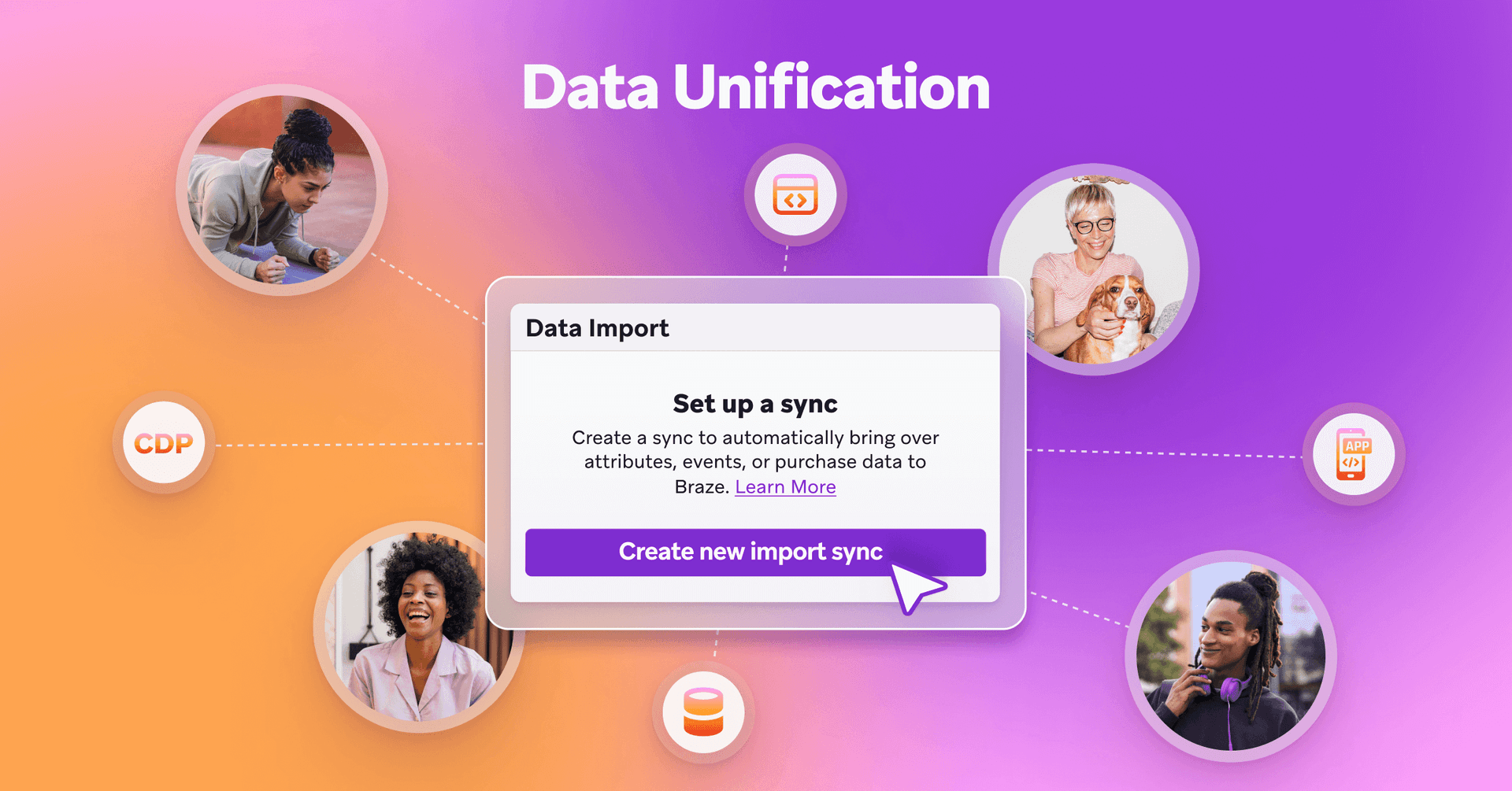
6 steps of first-party data collection
Aside from best practices, there are several ways you can collect first-party data. Here are some ideas on how to gather this valuable information:
1. Harness owned digital platforms
Your platforms—websites, apps, social media channels—are rich sources of first-party data. Implement analytics tools to monitor user interactions, such as page views, click-through rates, and time spent on your site. This data reveals user preferences and behaviors, informing tailored marketing efforts.
2. Encourage user registrations
Prompt visitors to create accounts on your platforms. During registration, collect information like names, email addresses, and preferences. This facilitates personalized experiences and targeted campaigns.
3. Leverage customer feedback
Although this is technically zero-party data, the use of surveys, quizzes, and feedback forms to gather insights directly from users can help, when paired with first-party data to refine products, services, and marketing strategies with much more accuracy.
4. Monitor eCommerce interactions
For eCommerce platforms, track purchase histories, order frequencies, and average order values. This information enables personalized product recommendations and targeted promotions.
5. Integrate social media analytics
Connect your social media platforms with your website to collect data on user interactions, such as likes, shares, and comments. This helps tailor content and engagement strategies.
6. Implement consent mechanisms
Transparency builds trust. You can also encourage users to share their information by telling them the value you will deliver with it.
How a well-executed first-party data strategy can enhance your marketing
Balancing privacy and personalization takes a thoughtful approach. Here are several ways you can use first-party data in an effective and compliant way.
Personalization of web and mobile experiences
Beyond addressing customers by their first names, true personalization involves tailoring content and offers based on individual behaviors and preferences.
Use case 1: Personalized product recommendations
By leveraging real-time segmentation and personalization features, brands can analyze a customer's purchase history to recommend complementary products during subsequent visits. For instance, if a customer has purchased a few shirts from you, you can recommend matching pants or announce when a new t-shirt line drops.
Use case 2: Dynamic content delivery
Utilizing dynamic personalization features like Braze Connected Content, brands can automatically tailor messages to each user based on their preferences and behaviors. For example, a travel app can send users destination recommendations and travel tips based on their past searches and bookings.
Advertising
Leveraging first-party data allows for more precise and effective advertising campaigns. By analyzing customer interactions and purchase histories, brands can craft targeted ads that resonate with specific audiences.
Use case 1: Retargeting campaigns
With Braze Audience Sync, brands can automatically sync user segments with advertising platforms like Facebook and Google. For example, if your data indicates that certain customers purchased a particular product, you can design ad campaigns promoting related items to those users, increasing the likelihood of repeat business.
Use case 2: Lookalike audience targeting
Create lookalike audiences by identifying potential customers who exhibit similar behaviors to your existing high-value users. For example, a subscription-based meal kit company wants to acquire new customers who are most likely to convert.
By using Braze Audience Sync, they can sync a segment of their most engaged, high-LTV subscribers with Facebook Ads. Facebook would then identify and target users with similar browsing and purchase behaviors, leading to higher ad efficiency and lower acquisition costs.
Customer retention
First-party data is important in strengthening relationships with existing customers.
Use case 1: Loyalty programs
Braze helps brands enhance customer loyalty by leveraging purchase histories and engagement patterns to create personalized, data-driven loyalty programs. Using Braze Canvas, brands can build automated loyalty journeys that reward customers based on behaviors and milestones.
Let’s say a coffee chain's mobile app uses Braze to track customer purchases and engagement levels. After every fifth purchase, the app would automatically trigger a push notification offering a free drink reward. If a user hadn’t redeemed their reward within a week, Braze would send a targeted reminder email with a time-sensitive bonus offer, encouraging them to visit again. This loyalty strategy could result in higher repeat purchases and an increase in app engagement.
Use case 2: Re-engagement campaigns
Braze enables brands to re-engage lapsed users through automated, personalized messaging across channels. By using Braze Predictive Churn, brands can identify at-risk customers and trigger re-engagement campaigns via push, email, SMS, and in-app messages, among other messaging channels.
For example, a fashion eCommerce brand notices that a segment of customers hasn’t made a purchase in over 60 days. Using Braze, they could set up an automated re-engagement journey that first sends a personalized email with a special discount, followed by a push notification featuring their favorite product category. If there was still no engagement, Braze could trigger an exclusive SMS offer for free shipping, successfully bringing a percentage of lapsed users back to purchase.
Improved user experience
First-party data allows for the personalization of website content, product recommendations, and the overall customer journey.
Use case 1: Onboarding personalization
Brands can tailor onboarding flows by dynamically adjusting content and messaging based on user preferences and behaviors. By leveraging Braze Canvas, businesses can create custom onboarding journeys that increase activation rates and long-term engagement.
For example, a language-learning app could use Braze to personalize the onboarding experience. When a new user selects "learning Spanish for travel" during sign-up, their first-session experience could be automatically adjusted to surface travel-specific vocabulary lessons instead of generic beginner content.
Additionally, the app could trigger a welcome email with personalized study tips and send an app push reminder encouraging users to complete their first lesson. This targeted onboarding flow could lead to an increase in first-week engagement and a higher retention rate among new users.
Use case 2: Adaptive UI/UX experiences
Braze enables brands to dynamically adjust in-app experiences based on real-time user behavior, helping improve engagement and conversion rates. With Braze Connected Content, brands can modify UI elements, homepage layouts, and content recommendations to reflect user preferences.
For instance, a luxury fashion retailer’s mobile app tracks user browsing behavior. If a customer frequently views handbags, the homepage layout can be dynamically adjusted to highlight new handbag arrivals and editorial content featuring designer bags.
Additionally, if a user abandons their cart, a push notification can be triggered, showcasing a limited-time VIP offer on their selected item. This adaptive shopping experience increases conversions and boosts average order value (AOV).
User acquisition
Analyzing first-party data helps identify characteristics of your existing customers, enabling the creation of targeted campaigns aimed at attracting similar audiences.
Use case 1: Personalized referral programs
Braze helps brands design customized referral programs that incentivize existing customers to bring in new users. By leveraging Braze Canvas, brands can tailor referral offers based on customer engagement, purchase history, or loyalty status, maximizing conversions.
Let’s say a meal delivery service uses Braze to segment customers based on order frequency. High-value customers (who order weekly) could receive a "Give $20, Get $20" referral offer via email and in-app messaging. Less frequent users could receive a limited-time double-reward incentive, encouraging them to re-engage and refer friends.
Braze tracks referral link shares and redemptions, allowing the brand to automate follow-ups for users who haven’t shared yet. This strategy increases referral participation and boosts customer lifetime value (LTV).
Use case 2: Multi-channel acquisition journeys
Braze enables brands to create seamless cross-channel acquisition journeys by engaging users across email, push, in-app messaging, and SMS. This allows new users to receive consistent, well-timed nudges that guide them toward conversion.
For example, a fitness tracking app launches a limited-time premium trial to attract new users. The campaign begins with a personalized email showcasing key premium features. If the recipient doesn’t sign up, Braze could trigger a push notification reminding them of the offer.
For users who still haven’t converted, the app follows up with an SMS containing a one-time discount on their first month. This cross-channel strategy can increase sign-up rates, while the Braze platform’s engagement analytics help refine future acquisition efforts.
A/B/n testing
First-party data is important when conducting tests, allowing you to experiment with different marketing strategies and determine what resonates best with your audience.
Use case 1: Optimizing message content
Good A/B testing tools allow brands to experiment with different messaging elements—such as tone, CTA placement, or image selection—to determine what resonates most with their audience.
Let’s pretend a subscription-based meditation app wants to increase engagement with its daily mindfulness reminders. They test two variations of a push notification:
- Version A: "Feeling stressed? Take a deep breath and try today’s 5-minute meditation."
- Version B: "Your daily moment of calm is ready. Tap to begin your 5-minute meditation."
After analyzing engagement metrics, they find that Version B has a higher open rate. They also notice that users who receive this version complete more meditation sessions. With these insights, they could optimize future push notifications by using softer, more inviting language, leading to higher session completion rates and increased app retention.
Use case 2: Channel performance testing
Brands can experiment with different communication channels to determine which method resonates best with their audience. Using Braze Canvas, brands can test push notifications, in-app messages, SMS, and email to optimize engagement.
In this instance, let’s imagine a grocery delivery app is trying to re-engage inactive users who haven’t placed an order in 30 days. They set up a split test in Braze Canvas, sending:
- Group A: A push notification with a "10% off your next order" incentive
- Group B: An in-app message promoting a "limited-time free delivery" offer
After analyzing results, the brand finds that push notifications lead to more reactivations, while in-app messaging drives higher average order value. With these insights, they could refine future campaigns to use push for urgency and in-app for upselling, leading to better overall campaign performance.
Real-life first-party data examples
Using the Braze platform, the following brands took their business challenges and created an integrated solution to drive forward with their objectives. If you’re looking for real-life first-party data examples to inspire your own initiatives, here’s how they did it:
First-class strategy: How ClassPass leveraged first-party data to boost conversions
ClassPass is a pioneering fitness and wellness subscription service that connects users to a diverse range of classes and experiences through a single app. Founded in 2013, its mission is to inspire individuals to lead active, enriched lives by providing flexible access to fitness and wellness options.
The challenge
ClassPass aimed to optimize its marketing spend and lifecycle messaging strategy to create a more cohesive customer experience and achieve its acquisition objectives. The existing process for targeting audiences on social media platforms was manual, time-consuming, and prone to errors.
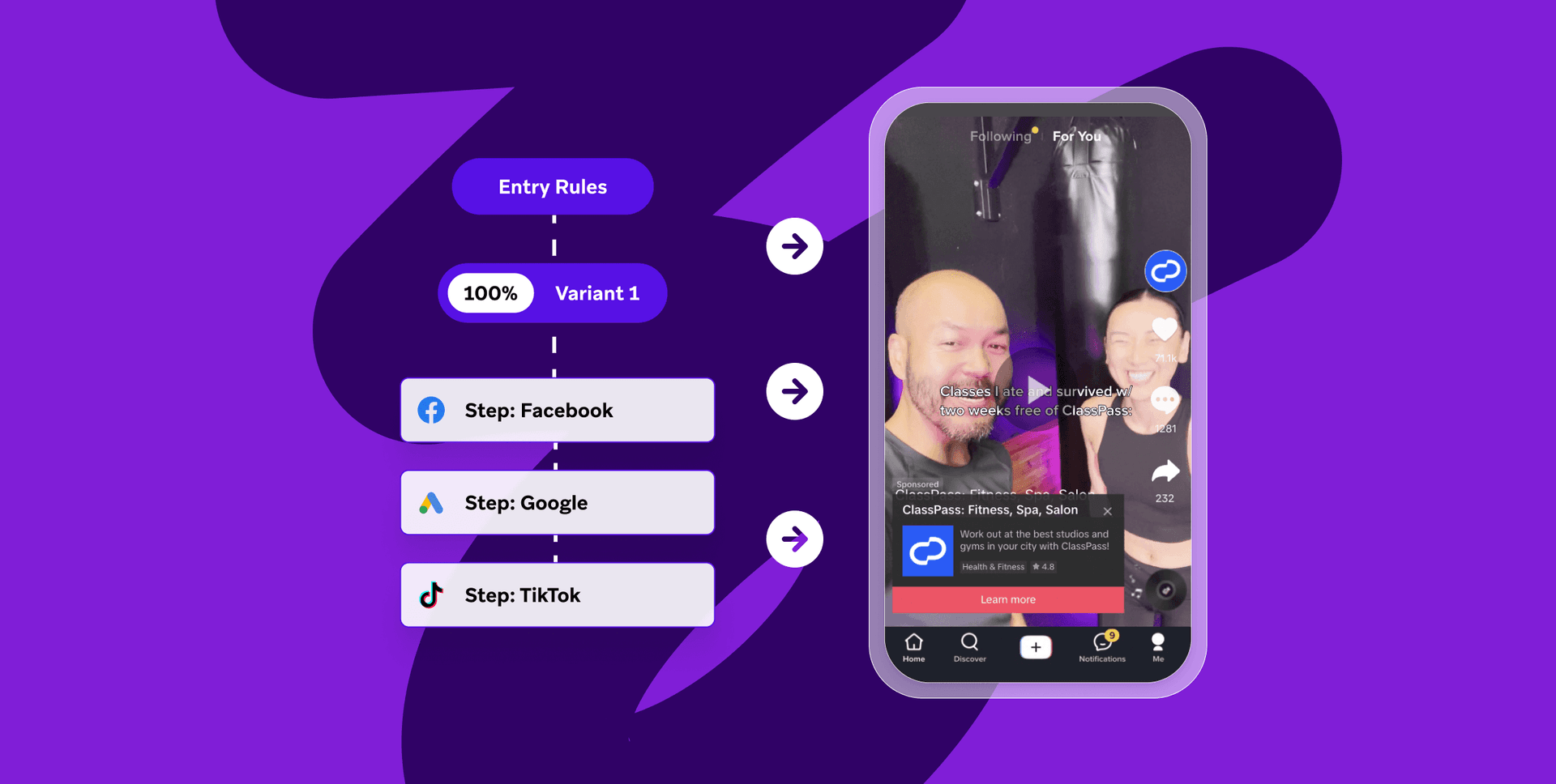
The solution
By implementing Braze Audience Sync, ClassPass automated the synchronization of real-time customer behavior and first-party data with key social media platforms, including Facebook, Google, and TikTok. This integration allowed for dynamic refinement of audience targeting, so that marketing efforts were both timely and relevant.
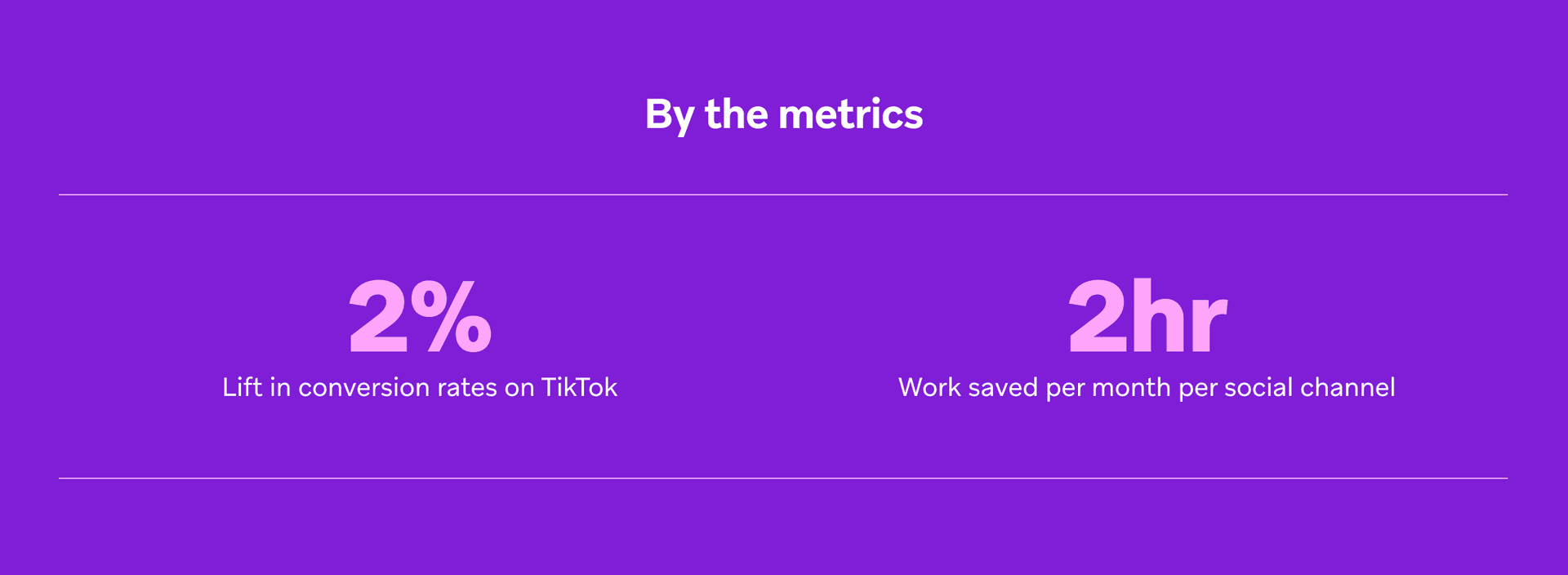
The results
The adoption of Braze Audience Sync led to a 2% increase in conversion rates on TikTok and enhanced operational efficiency by saving the marketing team approximately two hours per month per social channel, totaling six hours saved monthly.
Produce and personalize: Mon-marché.fr's 43% order surge via first-party data integration
Mon-marché.fr is a premier online grocery service delivering market-fresh produce, meat, dairy, and more to households in Paris and surrounding areas. Operating 15 hours a day, seven days a week, it caters to urbanites seeking convenient access to quality food items.
The challenge
To enhance customer engagement and drive orders, Mon-marché.fr sought to utilize additional customer data for personalized messaging. However, integrating data from external sources required technical resources, creating bottlenecks and limiting the marketing team's agility.
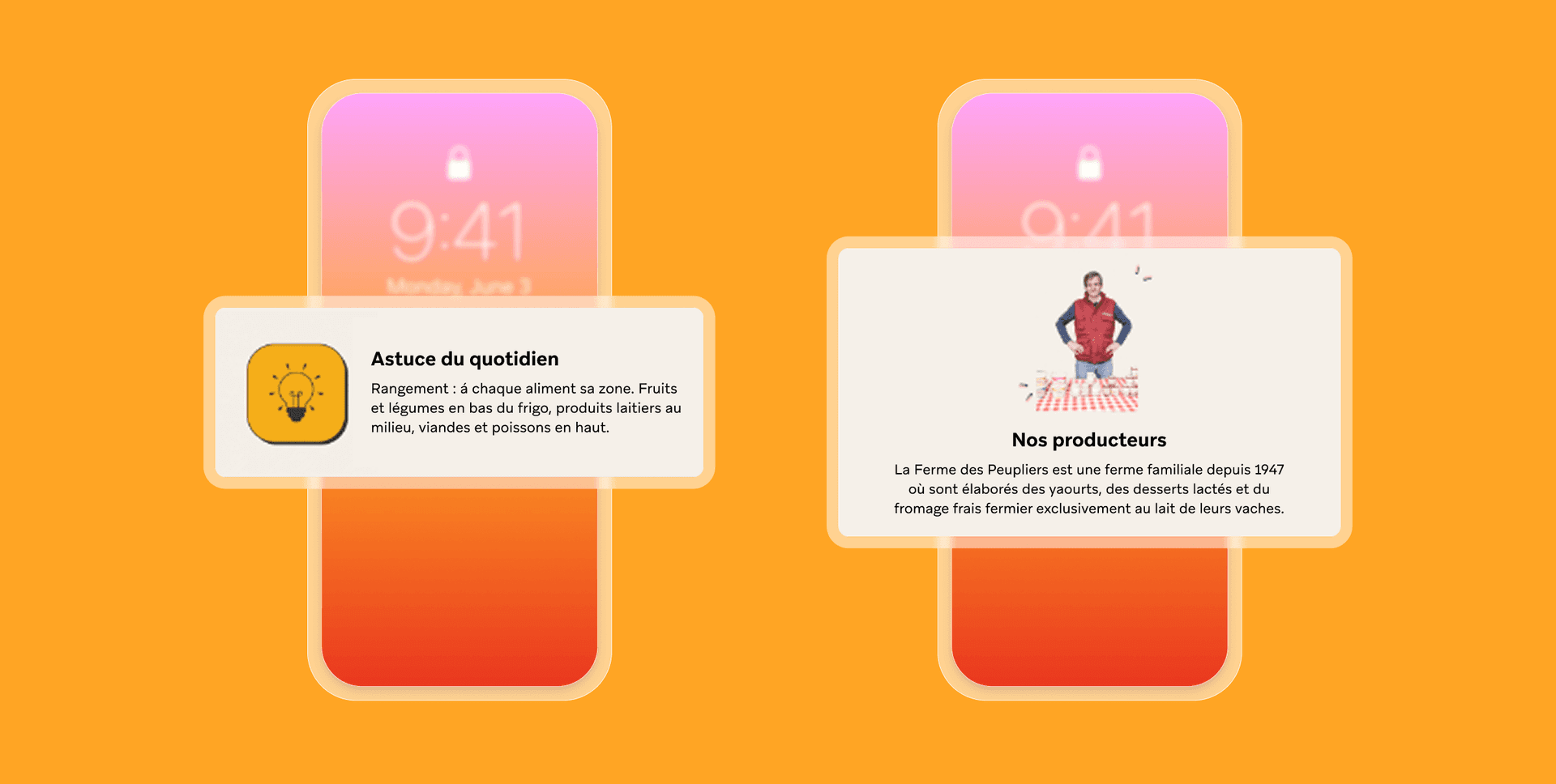
The solution
Leveraging Braze Data Transformation, Mon-marché.fr automated the import and activation of valuable customer data, including first-party data, without the need for extensive coding or technical support. This enabled the creation of personalized content and order reminder campaigns tailored to individual customer preferences.
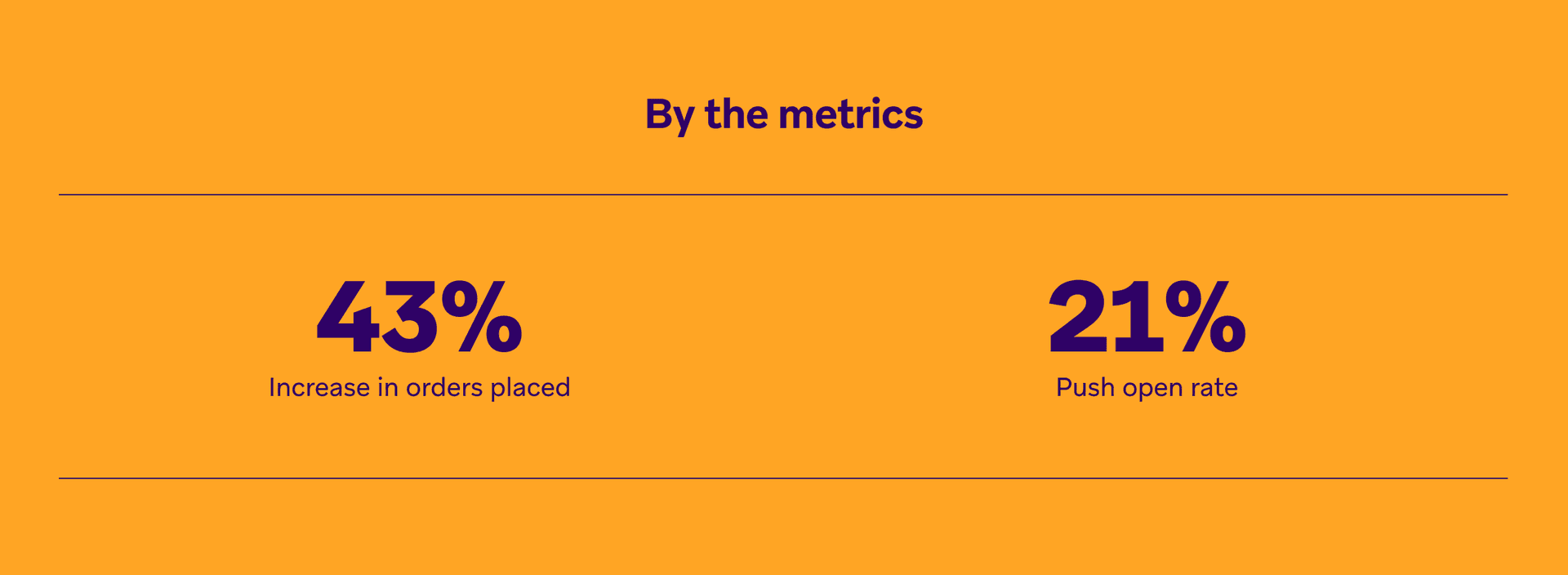
The results
With streamlined data integration and personalized communications, Mon-marché.fr achieved a 43% increase in orders and a 21% push notification open rate, significantly boosting customer engagement and revenue.
Waste not, want not: How Too Good To Go's data strategy doubled conversions
Too Good To Go is a social impact company dedicated to reducing food waste by connecting users with restaurants and stores offering surplus food at discounted prices. Through its app, users can purchase 'Surprise Bags' of unsold food, contributing to environmental sustainability.
The challenge
Despite a large user base, Too Good To Go faced challenges in converting app engagement into purchases. The limited availability of Surprise Bags required a strategic approach so that users would get notifications of availability and recommendations at the right times.
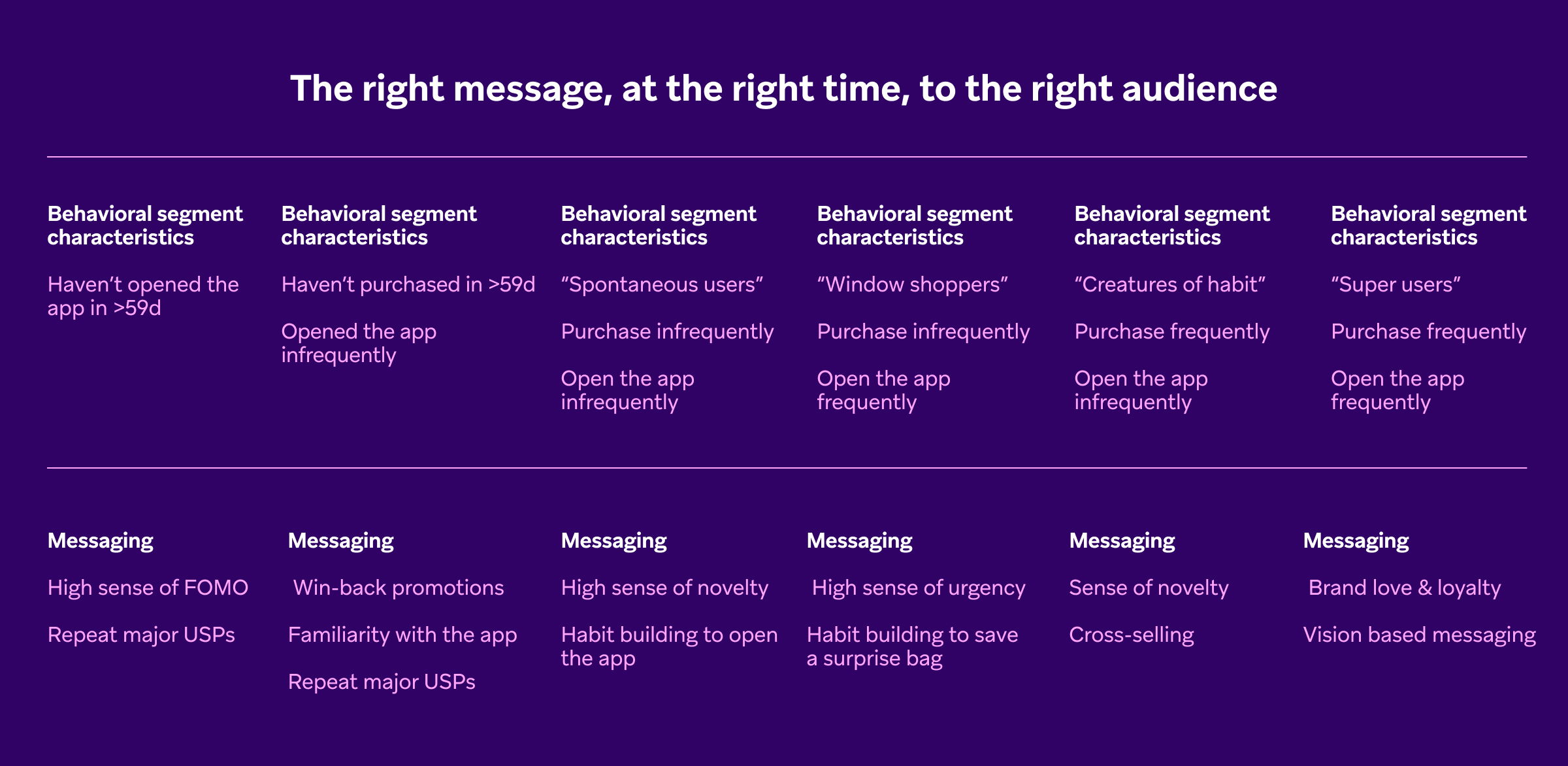
The solution
By utilizing Braze, Too Good To Go developed a strategy to segment users based on first-party data such as preferences and behavior, app sessions and purchase history. Using Braze Catalogs, they created personalized and automated campaigns and implemented API-triggered messages to notify users when new, relevant Surprise Bags were available.
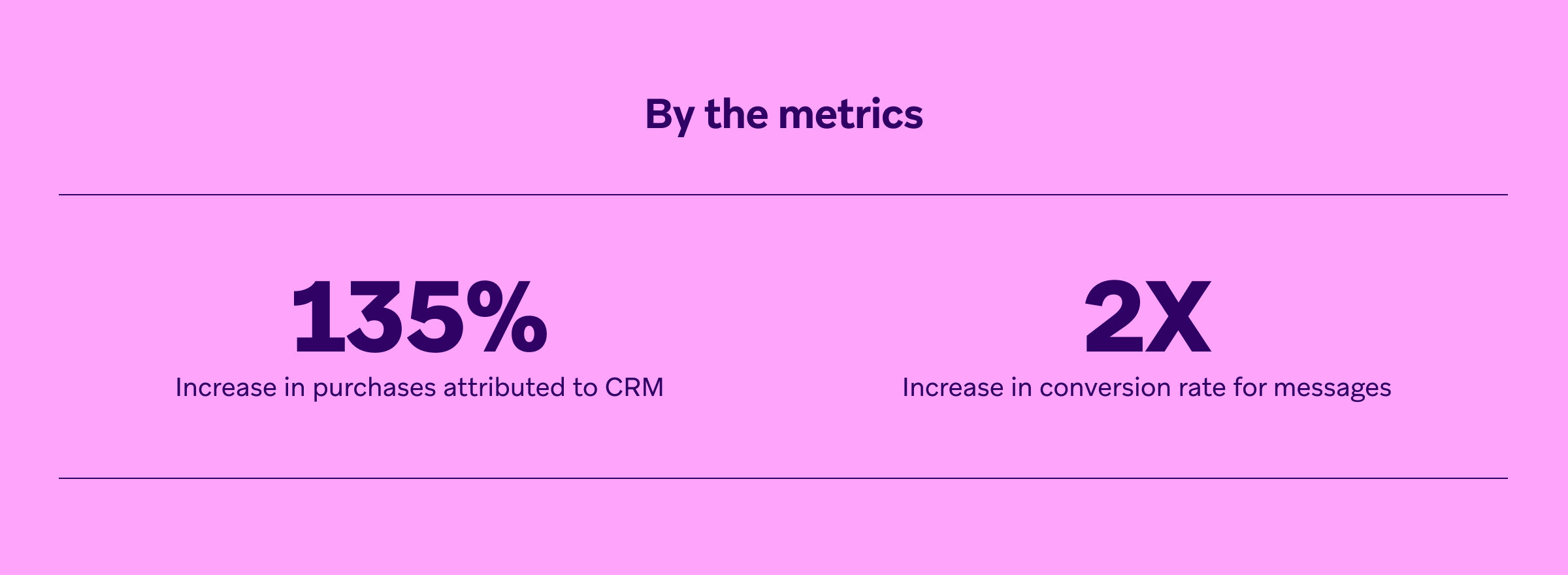
The results
This personalized approach led to a 135% increase in purchases attributed to customer relationship management efforts and a twofold increase in message conversion rates, effectively enhancing user satisfaction and reducing food waste.
Privacy and data collection with first-party data
Consumers are increasingly vigilant about how their personal data is collected, stored, and utilized. High-profile data breaches and the misuse of information have heightened awareness, leading individuals to scrutinize the data practices of businesses more closely.
This growing concern has prompted consumers to favor brands that prioritize transparency and ethical data handling, influencing their purchasing decisions and brand loyalty.
As third-party cookies move third-party data more and more out of the picture and privacy regulations tighten, consumers are asserting greater control over their personal information. This shift underscores the importance for brands to adopt robust first-party data strategies, building trust by respecting consumer privacy and delivering personalized experiences that individuals have consented.
Final thoughts
While the data privacy changes in recent years and those that lay ahead may seem daunting, they’re a reminder of the importance of first-party data—and the opportunity to enhance the level of personalization you deliver to customers.
When combining your marketing expertise with reliable data and a flexible technology platform, you can build trust and deepen relationships with your customers.
First-party data FAQs
First-party data is information your company collects directly from your audience, such as customers, website visitors, or social media followers. Second-party data is essentially another organization's first-party data that you obtain through a direct partnership. Third-party data is aggregated from various sources by external entities and sold to businesses.
Braze helps brands make the most of their own first-party customer data, allowing them to create personalized, law and regulation compliant engagement strategies. By using the Braze platform, businesses can gather, unify, and act on data directly from their users.
Related Tags
Be Absolutely Engaging.™
Sign up for regular updates from Braze.
Related Content
View the Blog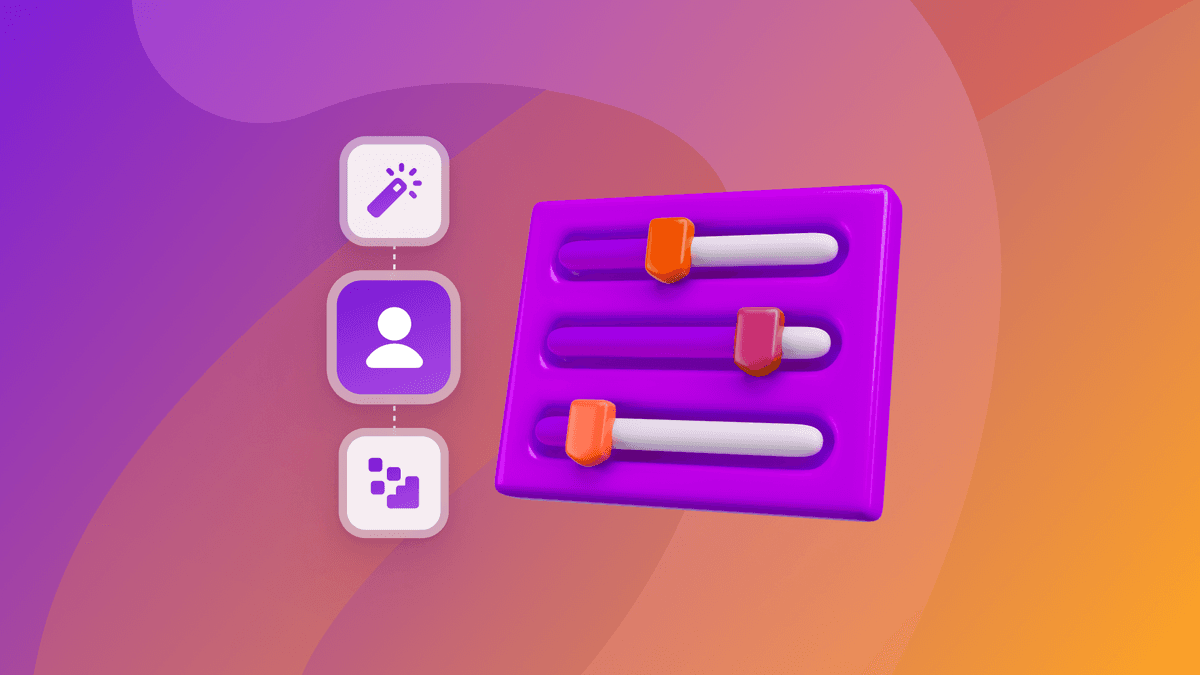
How behavioral marketing turns data into personalized experiences
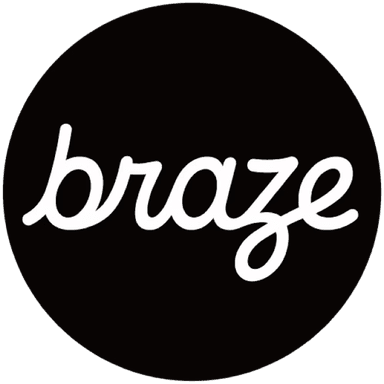
Team Braze
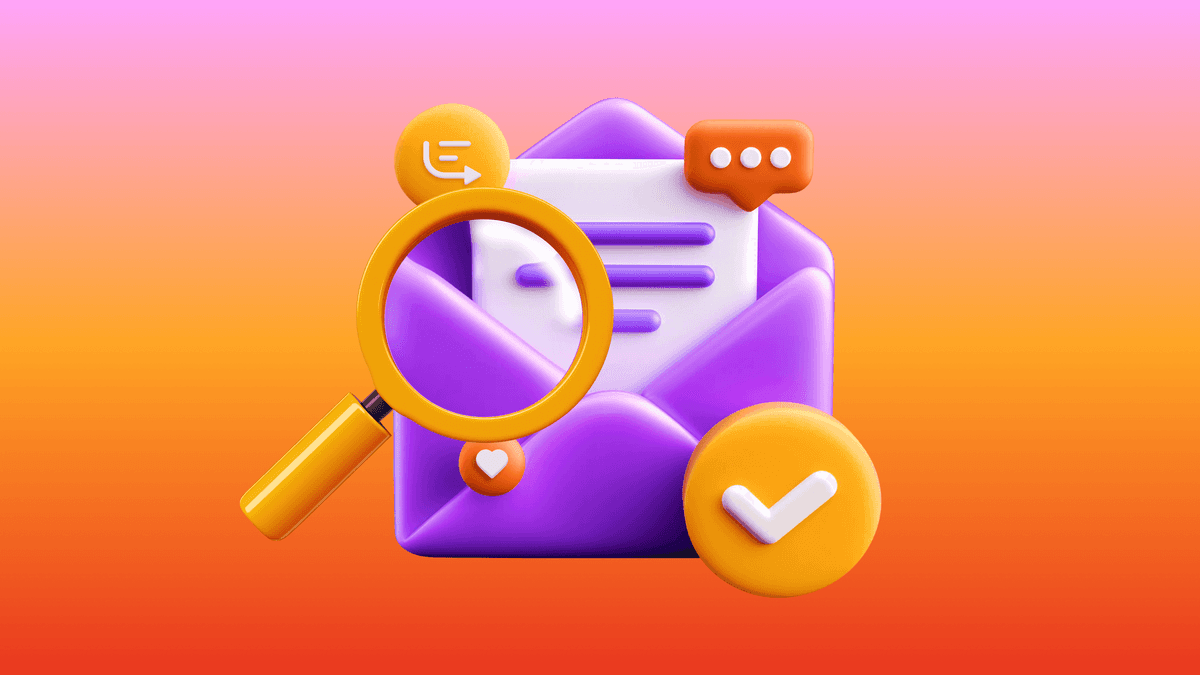
The new inbox reality: How iOS changes are reshaping email marketing

Aparna Prasad
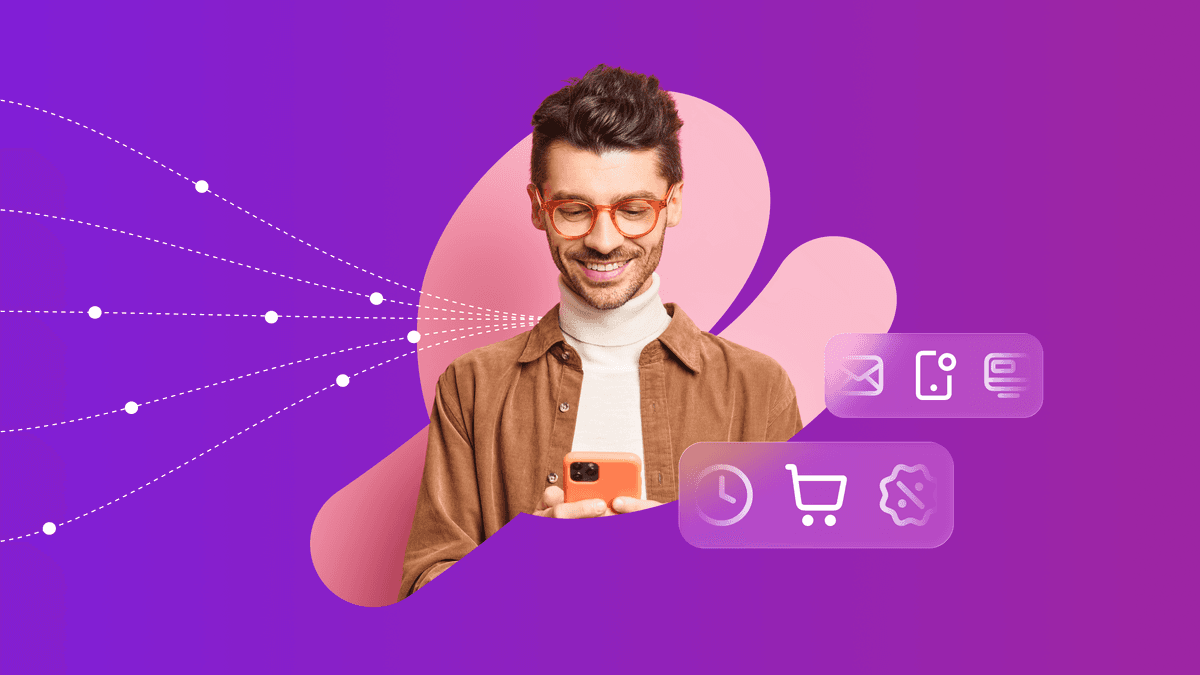
Experience optimization: Turning data insights into better journeys
